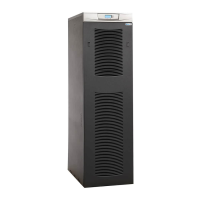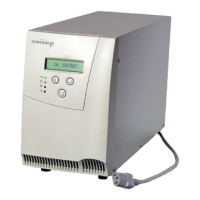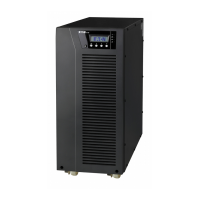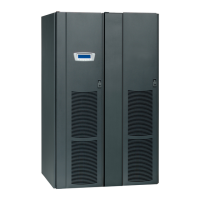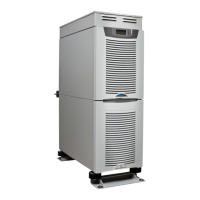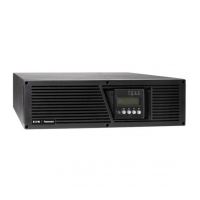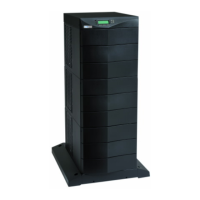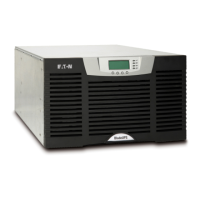Powerware Power Protection Handbook for IBM 9910 International System i and System p Applications
6
Preventing UPS Problems
The following observations can help you avoid potential problems
with the sale and installation of a UPS. Observation #1 alone will
protect you from a large percentage of problems. If you have any
questions about this information, please contact your Eaton
consultant for IBM UPS sales.
1. Always be sure to advise the customer which wall receptacle
is required to plug in the UPS.
Only UPSs with power ratings up to 1500 VA plug into a standard
15-amp wall outlet. All others require a larger receptacle, which
must be installed by an electrician. Things will go more much
more smoothly if your customers are not waiting for this to be
done after all of their equipment has arrived.
2. Does your customer have the correct set of interconnecting
cords?
For some applications, it’s as simple as plugging the UPS into the
wall socket and plugging the loads into the UPS. However, IBM
9910 applications often require specific interconnecting cords in
order to complete installation. We recommend that you make that
determination before installation to avoid delays.
3. Be sure that the UPS has enough output receptacles.
If the UPS is not equipped with enough output receptacles, you
may need to add a PowerPass Distribution Module or choose
another UPS.
4. Adding batteries to the UPS provides additional battery
runtime only, not added capacity.
If a customer adds equipment to the configuration, a higher rated
UPS may be needed.
With larger UPS models particularly above 3 kVA and for 3-phase
UPS solutions, it is extremely important to make sure that you
review that site at which the UPS will be located. Here are a few
general guidelines:
5. Make sure the UPS, batteries, and options will fit in the
allocated space.
Is there enough room for a technician to service the UPS? Some
customers have limited space.
6. Does the UPS have adequate ventilation?
Most UPS models incorporate internal fans to cool the UPS but
they need to pull cooler air through the UPS to work effectively.
You should not install the UPS in a sealed container or small,
sealed room.
7. Ensure that the UPS can be placed in its final position.
Will the UPS components fit through any doors? Are there any
stairs?
8. Is the floor strong enough?
The UPS and its battery cabinets can be heavy so make sure that
the site has the proper floor loading capacity.
9. Check to see if there is an adequate electrical supply near
the UPS.
Compare UPS fuse ratings (amps) and breaker types and
whether any electrical work may be needed (i.e. cabling to the
UPS terminal block input). The site may have its own electrical
contractors.
